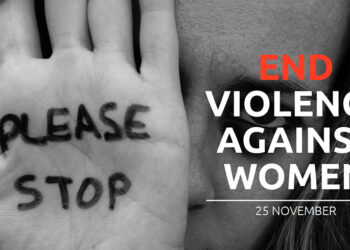Human Lives Human Rights: Terrorism is a phenomenon that has existed for a long time and has been used to annihilate different people physically. This phenomenon has undergone many changes over time and has evolved in various forms. One of these forms is religious terrorism, which is very different from the traditional form of terrorism.
Definition of the word terrorism
The term “terrorism” comes from French terrorisme, from Latin: terror, “great fear”, “dread”, related to the Latin verb terrere, “to frighten”. A draft published by Columbia University Press in 2004 on the concept of terrorism can be considered as one of the appropriate definitions of terrorism:
The unlawful use or threatened use, of force or violence by a group or individual, committed against persons or property to intimidate or coerce a government, the civilian population, or any segment thereof, in furtherance of political or social objectives. Thus, terrorism is the threat or use of violence, often against citizens, to achieve political goals to intimidate the opposition or create public discontent. Terrorism can be considered as a tool that consists of eight components:
- Deliberate action
- Logical
- Violent
- With a political goal
- Terrifying
- Does not follow the conventional laws of war
- Chooses its targets from the community
- Demands to change certain behaviors in the community.
Terrorist groups can also refer to movements or organizations whose main weapon has been systematic violence. Accordingly, terrorism is considered a tactic that is motivated by political motives and uses force or violence against governments or the people, and its main role is to influence public opinion.
Transformation in the motive of terrorism
In the first wave of terrorism (anarchism), the use of violence was more symbolic to eliminate the traditionalists who opposed the advancement of technology, to provoke the masses, and more attention was paid to the consequences of the terrorist act. Anarchists considered the use of fear as necessary for revolutionary change in their societies. The assassination of government leaders was one of their most common tactics, including the assassination of US President William McConnell in 1890 and Tsar Alexander II in 1881.
The end of World War II marked the beginning of a new era in the wave of terrorism that preceded the 1920s. This wave of terrorism, known as anti-colonial terrorism, mostly served nationalism and racist separatist tendencies. But what was new in this wave after the World War II was that, firstly, technology had advanced and, of course, terrorists benefited from it, and secondly, as Europe’s colonial powers weakened and global power shifted from Europe to the United States, the anti-colonial wave of terrorism in the North African Mediterranean and Asia served national liberation movements. This wave was able to win in some countries, such as Egypt and Algeria, and bring these countries to independence.
The agonizing Vietnam War produced the psychological requisites for the third or “New Left Wave.” The war also stimulated an enormous ambivalence about the value of the existing system, especially among the young in the West. The groups that appeared in the third wave often combined radicalism with nationalism as in the Basque Nation and Liberty (ETA), the Armenian Secret Army for the Liberation of Armenia (ASALA), the Corsican National Liberation Front (FNLC), and the IRA. The term “international terrorism” (commonly used during the “Anarchist Wave”) was revived to describe “New Left Wave” activities.
In fact, the revolutionary character created an important link between groups of different nationalities. The most prominent tactic used in this wave was hijacking, which occurred more than a hundred times during the 1970s. Kidnapping was another tactic of this wave. In the fourteen years after 1968, there were numerous international incidents, 409 kidnappings, and 951 hostages in Italy, Spain and Latin America.
Religious terrorism
Terrorism can broadly be divided into political terrorism and non-political terrorism. In non-political terrorism, there are no political goals and intentions, so its dimensions are limited and can be examined in the individual sphere. Non-political terrorism has two main forms: Psychological terrorism and criminal terrorism. The second type is political terrorism, which seeks to change society and realize socio-political or group political ideals. This type of terrorism is related to the views of the divine religions. In this category, religious groups justify terrorist acts with their religious principles and make their actions appear divine by bringing apparent reasons and evidence of religion.
Religious terrorism is different from other forms of terrorism. Bruce Hoffman argues: “For the religious terrorist, violence first and foremost is a sacramental act or divine duty executed in direct response to some theological demand or imperative. Religious terrorism uses violence to achieve its religious goals set by God and religion. This type of terrorism introduces a wide range of types of enemies in order to eradicate all evil. Religious terrorism stems from faith, covenant and religion.
The religious wave began in the late 1970s. Religion has usually played an important role in previous waves. As the struggles of Armenians, Macedonians, Irish, Cypriots, etc. show that religious and ethnic activities were also present in their struggles, but it is only in this wave that religion plays a very different and important role. In fact, one of the characteristics that can be said is the new trait of terrorism, is the use of religion.
However, religion is only a means to legitimize violence, and such groups do not want to make people pessimistic about themselves with religious justification. Therefore, like in the past, they are committed to their political goals and act upon them.
One of the causes of instability in the 21st century is radical theology and religious rhetoric. This type of theology uses radical religious ideology as a tool to achieve political goals. Therefore, the most salient feature of modern terrorism is its emphasis on religion. However, national liberation movements cannot be considered as terrorist groups.
Lebanese Hezbollah, for example, or militant groups in Palestine are fighting for their lost lands or or the threatened lands and with the support of their people, this struggle is open, continuous, not sudden.
The perpetrators of modern terrorism, or religious terrorism, only think of salvation after death, while as worldly gain and loss, or modern rationality have no importance for them. They introduce themselves as the oppressed who have risen up against the oppressors to claim their rights and want to save their nation either from the tyrannical rulers or from the hands of foreign enemies. However, most religious terrorists target civilians and pay no attention to the gender and age of the one being targeted. Hence, they are rejected by many of their compatriots.
This wave of violence is unprecedented, not only in its scope and the selection of targets, but also in its lethality and indiscriminate character. All those who engage in religious terrorism believe that their actions are considered pious by God. According to statistics, about half of the internationally active terrorists identified between 1995 and 2013 were religious. Religious terrorist are not concerned about the moral or immoral dimension of their action because they believe that every religious act is inherently moral, even if the whole world condemns it, they believe this condemnation has a divine reward for them.
The philosophy of religious terrorism is a relentless struggle between infidelity and faith, a struggle that ultimately leads to the defeat of infidelity and the victory of the believers. However, each religion has its own interpretation of infidels and polytheists. The method used by religious terrorists has certain characteristics; Unusual, unconventional and decentralized wars are among these characteristics.
One of the factors that leads to the creation of religious terrorists is the secularization of societies. In this regard, most terrorist groups choose religious names for themselves. Thus, a dogmatic view of religion makes them the most dangerous type of terrorists. Religious terrorism itself can be divided into three important types: Christian, Jewish and Islamic, but today, after the events of September 11, 2001, Islamic terrorism is in the spotlight. According to Islamic religious terrorism, which has been proposed by fundamentalist groups such as al-Qaeda, the world belongs only to the faithful believers and servants of God, and the earth must be cleansed of infidels.
According to the above mentioned things, the indicators of religious terrorism can be considered as follows: violent operations, religious dogma, superiority of ideological goals over political goals, justification of their actions by looking at religion, dividing the world into good and evil, having an aggressive and extreme state in order to revive traditions. Thus, religious terrorism became a factor creating fear, panic and taking away global security.


















